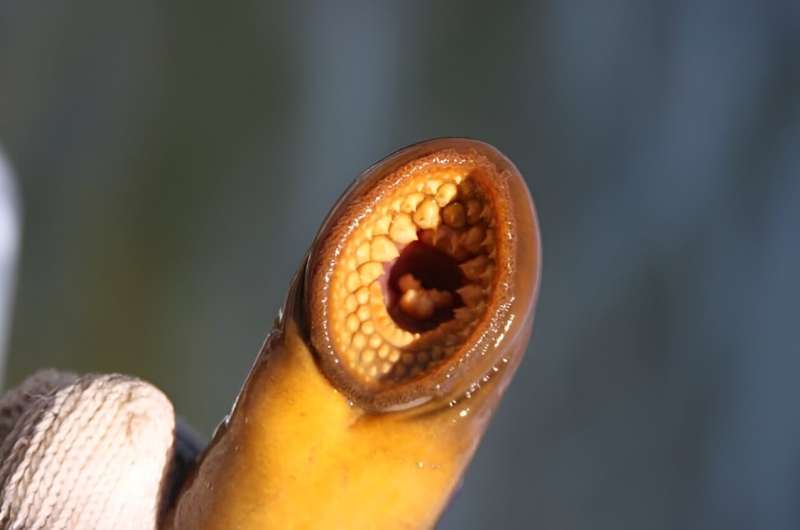Credit: rawpixel.com, CC-0
Evidence in lampreys for the presence of a rudimentary sympathetic nervous system, previously thought to be unique to jawed vertebrates, has been presented in Nature. The finding may prompt a rethink of the origins of the sympathetic nervous system, which operates without conscious thought and controls the fight or flight reaction.
The sympathetic nervous system is thought to have evolved in jawed vertebrates and—as jawless vertebrates—lampreys were thought to lack one. However, Marianne Bronner and colleagues have discovered paired bundles of sympathetic neurons that span the trunk of the larval sea lamprey in a chain-like arrangement.
This rudimentary sympathetic nervous system is derived from an embryonic structure called the neural crest, they show. The neural crest is a transient population of migratory stem cells that gives rise to many key vertebrate structures.
Although many of these features were present in ancestral jawless vertebrates, others—such as jaws and the sympathetic nervous system—are generally thought to have arisen later, in jawed vertebrates.
The findings here challenge the view that the sympathetic nervous system arose in jawed vertebrates and highlight the lamprey and other jawless vertebrates as important models for understanding the emergence of complex vertebrate features.
More information: Brittany M. Edens et al, Neural crest origin of sympathetic neurons at the dawn of vertebrates, Nature (2024). DOI: 10.1038/s41586-024-07297-0
Journal information: Nature
Provided by Nature Publishing Group
























